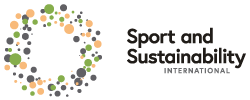City, Green, Go! project's roadmap to success: What Comes Next?
From Monday, the 9th, to Wednesday, the 11th, October 202,3 project partners gathered in Copenhagen to strategize on promoting eco-friendly sports for the general public in the city. Their focus was not only on defining the main deliverable of the City, Green, Go! project but also outlining key milestones for the upcoming phases.
A quick reminder of the objectives of City, Green, Go!
City, Green, Go! project aim to raise awareness and promote health-enhancing physical activities in urban settings, while encouraging citizens to live an environmentally conscious life.
To achieve this goal, the City, Green, Go! partners want to create a Toolkit that will enable stakeholders in urban settings to guide citizens toward a more eco-friendly and sporty lifestyle.
Toolkit for eco-friendly grassroots sports initiatives in urban settings- An eco-friendly Toolkit for Local Communities
The project's Toolkit will target local stakeholders with direct contact to citizens, such as municipalities, grassroots sports organisations and schools. By relying on local stakeholders who have the capacity to propose, advise or educate citizens, the project is part of an already established local ecosystem and communications channels.
Local Communities have the need and the will to raise awareness regarding the environmental and health aspects of their audiences.
We've got three essential urban stakeholders who satisfy these criteria:
Municipalities, which manage local life and have a strong local presence, with the capacity to reach a heterogeneous public that is both sporty and non-sporty.
Local grassroots sport organisations, which are in direct contact with citizens and have a great capacity to reach a large and heterogeneous public that is already sporty.
And finally, schools, which can reach a young public that is extremely receptive to issues of physical activity and environmental awareness.
A Toolkit based on 7 leverages:
The Toolkit aims to provide pragmatic solutions on different topics related to eco-friendly sports practices. This will enable stakeholders to get a better grasp of them, depending on what their organizations are already doing. We have identified 7 areas where stakeholders can take action and which are strongly linked to nature-based solutions (NbS) and environmental regeneration:
water conservation;
renewable energy;
energy efficiency;
waste reduction;
sustainable materials;
biodiversity;
social equity
The Toolkit will be based on a series of recommendations from the education, health and environmental protection sectors, as well as on the work carried out to date as part of the good practice collection and research report. This Toolkit will serve as a guide to implementing effective and sustainable local green legacy.
Next steps of the City, Green, Go! project :
Thank you ISCA to for hosting our meeting in Copenhagen and to all our partners, Budapest Sport Service Provider ISINNOVA, Sport and Sustainability International, Sport and Citizenship and Budapest City! Here are some photos of our meeting ! Finally, we would like to thank BGBeActive, Gehl Architects and Placemaking Europe for their informative contributions on active cities and the importance of placemaking in citizen’s engagement.






